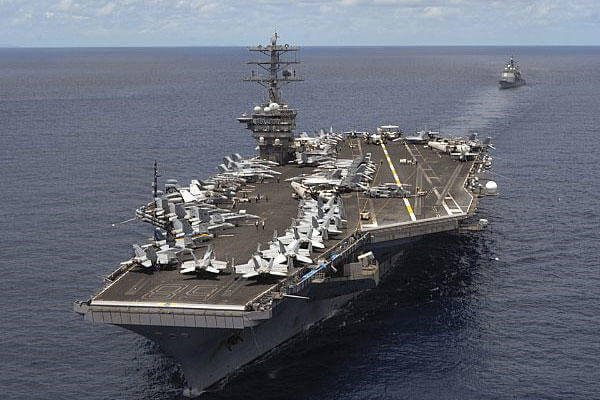The U.S. military remains poised, ready and in position to strike the Assad regime in Syria should such actions be ordered by President Obama, Pentagon and Navy officials said Thursday.
"We haven't had any major shifts in our posture. We continue to maintain that it was the threat of force that got us to where we are today. We continue to maintain a robust force posture. We are ready to carry out any action deemed necessary by the President," a DoD official told Military.com.
The U.S. force posture maintains its place as diplomatic efforts continue and United Nations-backed weapons inspectors report progress with ongoing efforts in Syria to destroy chemical weapons stockpiles.
The ongoing deal emerged through diplomatic discussions between the U.S. and Russia regarding mutual efforts to support the destruction of Syria's chemical arsenal. The two countries reached an agreement in Geneva on Sept. 14, leading to a subsequent U.N. resolution.
Senior officials with the U.N.-supported Organization for the Prohibition of Chemical Weapons, or OPCW, say the Assad regime is cooperating with ongoing inspections and has already allowed for the destruction of chemical agents.
"Under the supervision of experts from the Organization for the Prohibition of Chemical Weapons, supported by the United Nations, Syrian personnel used cutting torches and angle grinders to destroy or disable a range of items. This included missile warheads, aerial bombs and mixing and filling equipment. The process will continue in the coming days," an OPCW press statement indicated.
Nevertheless, U.S. forces are maintaining a ready force posture should the ongoing diplomacy and U.N.-supervised weapons inspections fail to produce verifiable results, service officials said.
Four Navy destroyers, the USS Barry, USS Ramage, USS Gravely and USS Stout, are still deployed in the Eastern Mediterranean and the USS Nimitz carrier strike group is still based in the Red Sea, service officials told Military.com.
These assets, which have been deployed at these locations for about a month may remain on station for weeks or months to come.
"We're keeping forces in the region should their capabilities be needed," a Navy official told Military.com
Each destroyer is able to carry up to 96 Tomahawk missiles, so the ships bring substantial fire power to the region. The composition of the carrier group can change depending upon a range of factors, Navy officials said. The USS Nimitz escort ships have departed, however a cruiser and a destroyer from the USS Truman carrier group have now joined the Nimitz group.
The guided missile destroyers and cruiser are equipped with long-range weapons and the USS Nimitz is home to a range of potentially impactful air assets such as F/A-18s and H-60 helicopters, among others.
One analyst said maintaining a credible threat of force could be key to ensuring success with the weapons elimination process.
"We've had experience with these kinds of regimes. Maintaining the credible threat of force is absolutely vital to creating an environment in which the process will continue. Otherwise the Syrian regime might cheat, delay or not fully cooperate. If the threat of force brought us to this point then it makes sense to see it through," said Daniel Goure, vice-president of the Lexington Institute, a Virginia-based think tank.
Goure also addressed a concern many have voiced about the difficulty in verifying existing or destroyed Syrian stockpiles of weapons in a warzone.
"If you have reason to believe that there are undeclared stockpiles, you have a real problem because it is a warzone. The real question is not going to be verification of things in hand but hunting down undeclared material and stockpiles. Does what the Syrians declare match other intelligence?" Goure said.


























